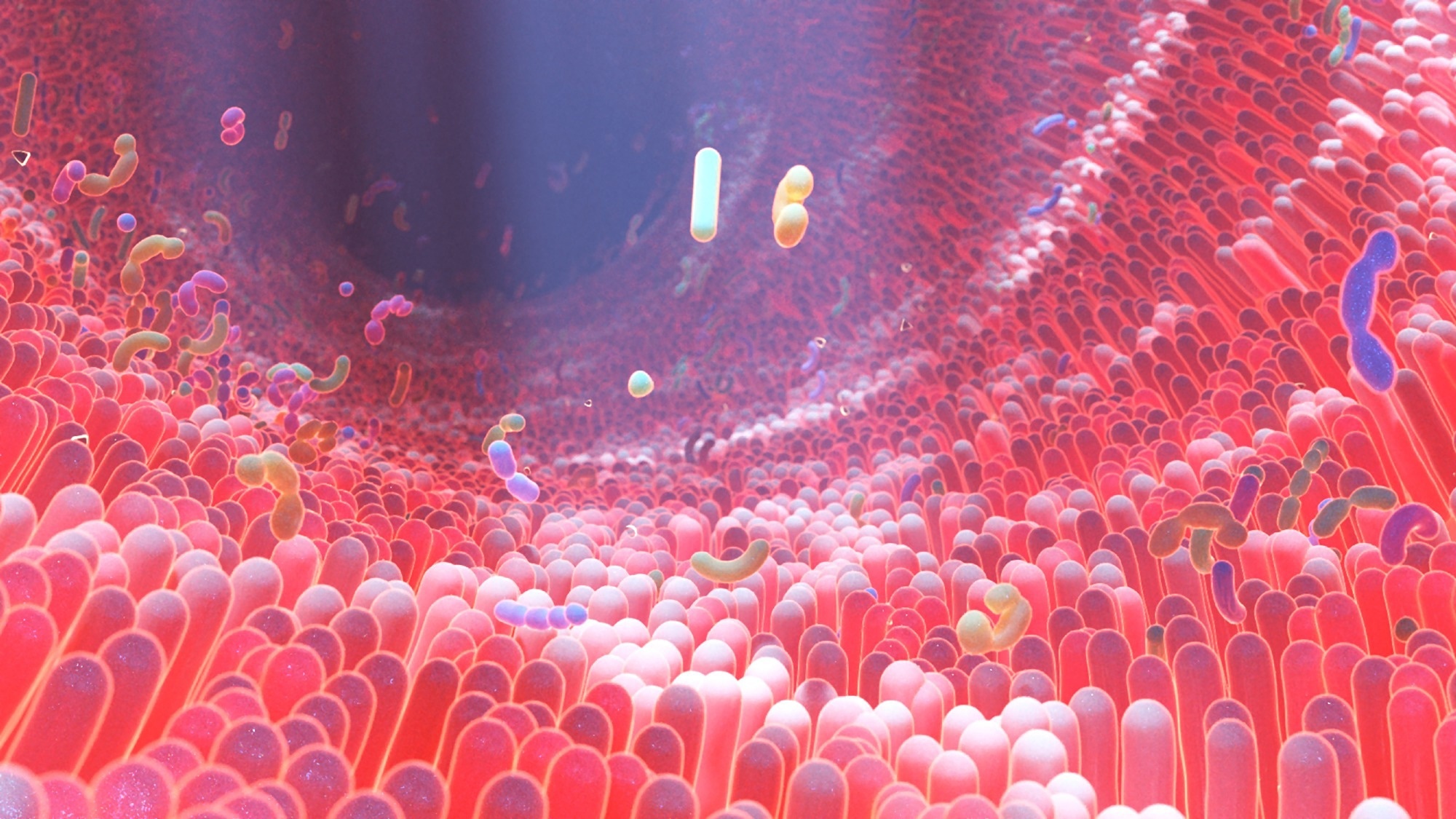In a recent study published in Molecular BioMedicine, researchers assessed the taxonomic characteristics of the intestinal (gut) microbiome in patients with active severe acute respiratory syndrome coronavirus 2 (SARS-CoV-2) infections. They compared their findings to those at least two weeks after viral clearance and uninfected persons.
 Study: Alterations of the fecal microbiota in relation to acute COVID-19 infection and recovery. Image Credit: Alpha Tauri 3D Graphics/Shutterstock
Study: Alterations of the fecal microbiota in relation to acute COVID-19 infection and recovery. Image Credit: Alpha Tauri 3D Graphics/Shutterstock
Background
People with acute coronavirus disease 2019 (COVID-19) experience several symptoms, but all factors contributing to severe clinical outcomes remain to be understood. Several studies have demonstrated associations between the gut microbiome and the severity of COVID-19. Patients show gastrointestinal (GI) symptoms and shed virus in the stools, suggesting the association of the GI tract with acute COVID-19.
Humans have diverse microbes, termed the microbiome, residing in the GI tract and skin, with the largest population in the colon. These commensals interact with human immunity, metabolism, and the central nervous system. However, there is also extensive interpersonal variation in the types of gut microbiome and their abundance.
About the study
In the present study, researchers collected 60 stool samples from 20 patients, including those with acute COVID-19, those who had recovered, and healthy controls. They examined the abundance of 16S ribosomal ribonucleic acid (rRNA) genes in stool samples. The sequencing fetched an average of 26,775 denoised operational taxonomic units (OTUs) per fecal sample, and a sampling depth of 10,000 reads per sample was sufficient for diversity analyses. The team determined the α-diversity differences between the COVID-19-positives and recovered patients by Shannon’s index distance metric. Likewise, they assessed the community structure (β-diversity) overlaps and differences in the three study groups.
Study findings
During acute COVID-19, 30% of patients experienced GI symptoms. However, barely 5% of the COVID-19 patients had comorbidities involving GI disorders, while 50%, 35%, and 35% had hypertension, obesity, and diabetes, respectively. These individuals were significantly older than controls but were on a regular diet, except for two who adopted a low-sodium diet. Participants across all study groups, 10% of the controls, 60% of the COVID-19-positives, and 20% of the recovered patients had taken antibiotics in the prior six months, with 50% of COVID-19-positives receiving at least one type of COVID-19 treatment. At all sampling depths above 1000, the researchers noted marked differences in species richness between COVID-19-positive patients and controls and the controls and recovered subjects. Notably, antibiotic use was correlated with substantially reduced species richness in only COVID-19-positive patients, not the other two study groups.
Analysis of α-diversity by Pielou’s evenness did not show significant differences across the three study groups. Also, α-diversity did not vary with gender in any group regardless of antibiotic exposure. β-diversity overlapped between COVID-19-recovered individuals and controls, but the latter differed with COVID-19-positive patients in β-diversity. Principal coordinate analysis (PCoA) revealed that antibiotic use drove the observed divergence in microbial populations in the COVID-19-positive patients.
Among patients with no antibiotic exposure, the UniFrac analysis of β-diversity showed marked dissimilarity between COVID-19-positive patients and the other two study groups. Overall, these results evidenced gut microbiota dysbiosis in COVID-19 patients, though the effect was primarily due to antibiotic use and did not persist post-recovery.
The researchers identified 55 bacterial species that differed significantly between COVID-19-positive patients, suggesting that antibiotic use further disturbed species richness (α-diversity) in COVID-19 patients. Furthermore, these patients showed distinct β-diversity clustering according to antibiotic use, plus their gut microbial community structure varied with GI symptoms and obesity.
At the bacterial taxa level, COVID-19 reduced the relative abundance of Lachnospiraceae and increased the abundance of Prevotellaceae. While Lachnospiraceae abundance was restored in the recovered patients, Prevotellaceae reached the highest levels post-recovery, a trend apparent in patients with no antibiotic use. COVID-19-recovered patients depending on antibiotic use showed substantial variations in Eubacterium relative abundance compared to two other study groups.
Also, COVID-19 patients had significantly less abundance of the genera Faecalibacterium, Adlercreutzia, and the Eubacterium brachy groups plus short-chain fatty acids (SCFA)-producing bacteria, such as Ruminococcaceae and Lachnospiraceae. Note that reduced numbers of SCFA-producing bacteria could interfere with host immune responses against SARS-CoV-2 infection. Likewise, enriched levels of Prevotellaceae and the Eubacterium brachy group species for a prolonged period might explain persistent oral manifestations in people with long COVID-19.
Conclusions
The present study evidenced that acute COVID-19 could induce gut microbiota dysbiosis and deplete commensal bacteria for prolonged periods, a phenomenon further enhanced by antibiotic use. These results could inform the development of probiotics for COVID-19 treatment.
Future research across larger longitudinal cohorts with wide variations in the COVID-19 severity gradient could enhance understanding of the role of the gut microbiome in disease progression and subsequent recovery.